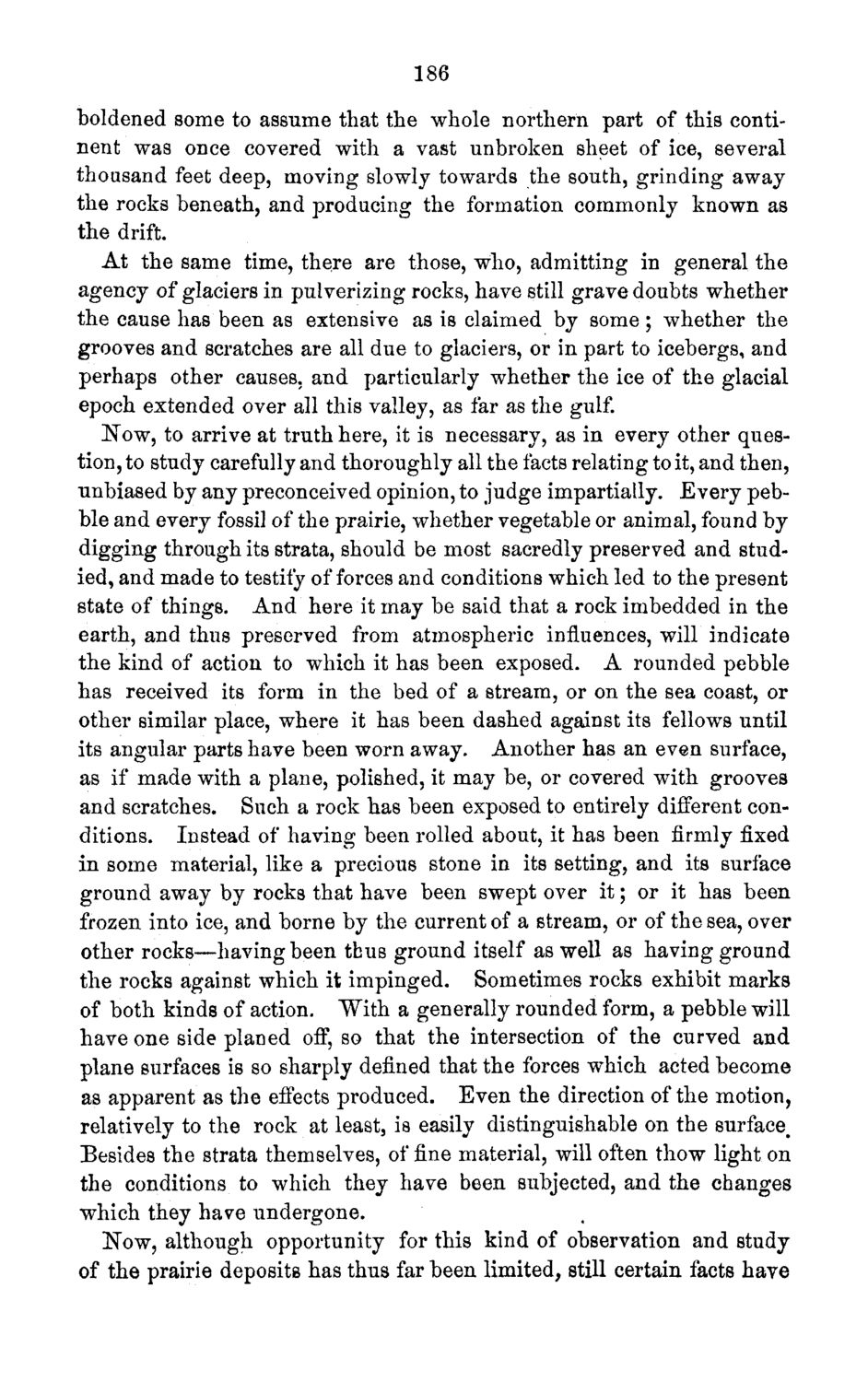| |
| |
Caption: Board of Trustees Minutes - 1871
This is a reduced-resolution page image for fast online browsing.

EXTRACTED TEXT FROM PAGE:
186 boldened some to assume that the whole northern part of this continent was once covered with a vast unbroken sheet of ice, several thousand feet deep, moving slowly towards the south, grinding away the rocks beneath, and producing the formation commonly known as the drift. At the same time, there are those, who, admitting in general the agency of glaciers in pulverizing rocks, have still grave doubts whether the cause has been as extensive as is claimed by some ; whether the grooves and scratches are all due to glaciers, or in part to icebergs, and perhaps other causes, and particularly whether the ice of the glacial epoch extended over all this valley, as far as the gulf. Now, to arrive at truth here, it is necessary, as in every other question, to study carefully and thoroughly all the facts relating to it, and then, unbiased by any preconceived opinion, to judge impartially. Every pebble and every fossil of the prairie, whether vegetable or animal, found by digging through its strata, should be most sacredly preserved and studied, and made to testify of forces and conditions which led to the present state of things. And here it may be said that a rock imbedded in the earth, and thus preserved from atmospheric influences, will indicate the kind of action to which it has been exposed. A rounded pebble has received its form in the bed of a stream, or on the sea coast, or other similar place, where it has been dashed against its fellows until its angular parts have been worn away. Another has an even surface, as if made with a plane, polished, it may be, or covered with grooves and scratches. Such a rock has been exposed to entirely different conditions. Instead of having been rolled about, it has been firmly fixed in some material, like a precious stone in its setting, and its surface ground away by rocks that have been swept over i t ; or it has been frozen into ice, and borne by the current of a stream, or of the sea, over other rocks—having been thus ground itself as well as having ground the rocks against which it impinged. Sometimes rocks exhibit marks of both kinds of action. With a generally rounded form, a pebble will have one side planed off, so that the intersection of the curved and plane surfaces is so sharply defined that the forces which acted become as apparent as the effects produced. Even the direction of the motion, relatively to the rock at least, is easily distinguishable on the surface. Besides the strata themselves, of fine material, will often thow light on the conditions to which they have been subjected, and the changes which they have undergone. Now, although opportunity for this kind of observation and study of the prairie deposits has thus far been limited, still certain facts have
| |